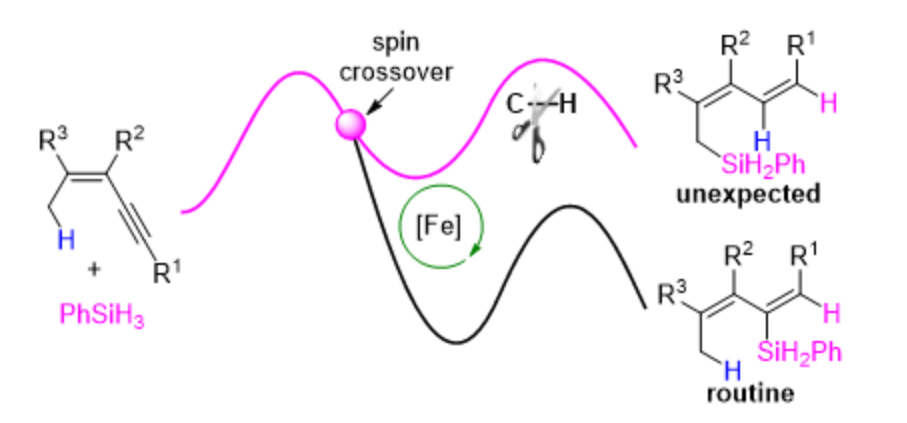From a spin state perspective, metal complex catalysts are classified into two types: closed-shell catalysts (without unpaired electrons, typically based on noble metals like palladium) and open-shell catalysts (with unpaired electrons, often based on earth-abundant metals such as iron) Closed-shell catalysts have been extensively studied and widely used in industrial production, while open-shell catalysts are much underdeveloped. Open-shell catalysts display catalytic behaviors markedly distinct from closed-shell catalysts. This divergence offers exciting new avenues in synthetic chemistry and is garnering increasing interest. For instance, the spin crossover, a mechanism initially observed in the mechanistic studies concerning high-valent metals in biological processes, commonly referred to as two-state reactivity, has been evidenced in a variety of reactions including alkene isomerization[4], β‒H elimination, C‒H functionalization ,and alkene cross-coupling and cycloaddition. These reactions collectively demonstrate that spin crossover in open-shell catalysts can navigate different potential energy surfaces and accelerate reactions, thereby distinguishing it from the catalytic performance of closed-shell catalysts. However, the underlying principles governing how spin crossover influences chemical reactions are still poorly understood. As a result, the development of open-shell catalysts is seriously hindered by a limited understanding of their spin effects. Unraveling these spin effects is crucial for improving the design of open-shell catalysts and could potentially revolutionize catalysis, a prospect of significant research importance.
Recently, Shou-Fei Zhu’s group have accomplished allylic C(sp3)‒H silylation and hydrosilylation reactions of 1,3-enynes with catalysis by open-shell 1,10-phenanthroline/iron complexes. The allylic C(sp3)‒H silylation reactions represent the first examples of such transformations with catalysis by a transition metal. They propose that the reactions involve a unique C‒H activation mode, which named as substrate-assisted C‒H activation. Their experimental observations and DFT calculations revealed that spin crossover enables a single intermediate to undergo different reactions by accessing different spin-state potential energy surfaces, leading to different products, indicating spin-crossover to be a fresh and promising dimension for regulating chemoselectivity. Moreover, spin crossover can either promote or hinder different steps of a given catalytic reaction. Their findings highlight the profound spin effects of iron catalysts on chemical transformations. Relevant achievements were published in Angew. Chem. Int. Ed., 2024, DOI: 10.1002/anie.202402044.
